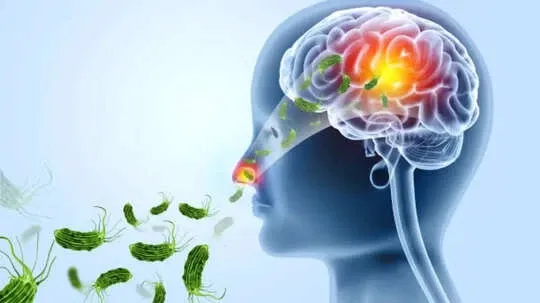According to the Missouri Department of Health and Senior Services, the unidentified patient is being treated in an intensive care unit for a confirmed Naegleria fowleri amoeba infection. While the officials are still trying to find the source of the infection, the health department said the patient became ill days after they were at the lake. The Ozarks State Park lists two public beaches open to visitors at this time of the year, but it has not been specified which beach the patient had gone to.
Last month, a 12-year-old boy died in South Carolina after getting infected. According to officials, it was the first known case in the state since 2016.
What is Naegleria fowleri infection?
Also known as primary amoebic meningoencephalitis or PAM, Naegleria fowleri infection is a rare but almost always fatal brain infection caused by the amoeba. Doctors say this amoeba is commonly found in warm freshwater environments like lakes, rivers, and hot springs. Infection typically occurs when contaminated water enters the nose, usually during activities like swimming or diving, and the amoeba travels to the brain via the olfactory nerve.
You cannot get the infection from swallowing contaminated water or from someone else who is infected. According to health officials, there have been more than 160 reported cases of PAM in the United States since 1962. To reduce the risk of infection, the Centers for Disease Control and Prevention, or CDC, suggests holding your nose or wearing a nose clip if you are jumping or diving into freshwater or keeping your head above water in hot springs.
Signs and symptoms of brain-eating amoeba infection
The signs and symptoms of primary PAM come on suddenly and are severe at the start, including:
- High fever
- Painful headache
- Nausea and vomiting
- Trembling
- Symptoms like those of meningitis, including a stiff neck and extreme sensitivity to light
- Mental confusion
- Stiff neck
- paralysis
- Coma
Doctors say the fatality rate is higher than 97 per cent even with treatment.
How is the infection treated?
Doctors say the treatment of choice for PAM is the antifungal amphotericin B. Some survivors have been treated with a combination of drugs that included amphotericin B, rifampin, fluconazole, and a drug called miltefosine.
According to experts, the best results came from early diagnosis and treatment with the recommended drugs, along with cooling the body to below-normal temperature to treat brain swelling.
Ways to prevent the infection
Doctors say prevention is essential, and so, a few key things to remember include:
- Do not swim, wade, or do watersports in warm freshwater locations, especially still waters, without nose plugs.
- Don't use tap water for a neti pot or any other device that cleans your nasal passages.
- You can use filters to remove germs from water.
- Use chlorine bleach liquid or tablets to disinfect your water for cleaning your nose and sinuses.
- If you do develop symptoms of fever or headache after going into warm freshwater, tell your doctor where you have been.
